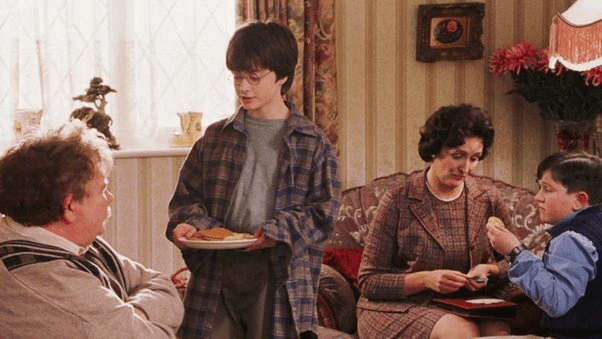Every compelling story, every captivating film, at its core, is built on a foundation of emotional connection. One such emotion, often overlooked yet vitally important, is sympathy. This powerful sentiment has the ability to draw audiences into the narrative, compelling them to emotionally invest in the characters and their journeys.
What is Sympathy in Story and Psychology?
First, let’s define sympathy
In this comprehensive exploration, we will delve into the psychological understanding of sympathy, distinguish it from empathy, and elucidate its profound influence in storytelling and cinema. But before we do, let's get a basic concept of sympathy by looking at its definition.
SYMPATHY DEFINITION
What is sympathy?
From a psychological standpoint, sympathy is understood as the perception, comprehension, and reaction to the distress or need of another life form. This complex emotion involves feeling sorrow or pity for someone else's misfortune.
Sympathy can manifest in two primary forms: reactive sympathy, where we respond to someone else's suffering that has already occurred, and anticipatory sympathy, where we respond to a potential problem that hasn't happened yet but is perceived to be imminent.
Sympathy is not merely an emotion felt in isolation. It often propels individuals towards compassionate action, as humans are naturally inclined to alleviate others' suffering when they feel sympathetic towards their plight. This aspect of sympathy makes it a powerful tool in storytelling and filmmaking, effectively driving character interaction and plot development.
Characteristics of Sympathy:
- Understands and responds to another's distress
- Experienced as sorrow or pity for others' misfortune
- Can motivate compassionate action
Difference Between Empathy and Sympathy
Sympathy vs Empathy
While sympathy and empathy are frequently used interchangeably in everyday conversation, they represent distinct emotional responses. Empathy refers to the ability to understand and share the feelings of another, essentially stepping into their shoes and experiencing their emotions as if they were your own.
Sympathy, conversely, does not involve a shared perspective or experience. Instead, it's about recognizing another's hardship and feeling sorrow or pity for their situation.
An example of this in story is if a character in a film loses a loved one, you might feel sympathy for their loss, but unless you've experienced a similar loss, you might not empathize with their specific emotions.

Manchester by the Sea · Understanding Sympathy
This distinction is crucial in understanding how audiences connect with stories, characters, and character arcs.
What is Sympathy Used For in Story?
The Role of Sympathy in Storytelling
In the realm of storytelling, sympathy plays an indispensable role. It encourages readers or viewers to form an emotional connection with the characters, making their triumphs more rewarding and their losses more poignant. Sympathy can drive engagement, keeping audiences hooked as they root for characters to overcome their challenges.
Consider the story of Harry Potter. Many readers feel sympathy for Harry as he faces numerous adversities, including the loss of his parents and the constant threat of Voldemort. This sympathy compels readers to engage with the story, rooting for Harry as he battles against Voldemort.

Harry Potter · Sympathy Examples in Story
Moreover, sympathetic characters often serve as the moral center of a story, guiding the audience's judgments and interpretations of events. They provide a lens through which the audience can view and evaluate the narrative, shaping the audience's emotional journey and overall experience of the story.
Sympathy Meaning in Cinema
Sympathy in Film: A Powerful Tool
In cinema, filmmakers deftly wield the power of sympathy to elicit emotional responses from the audience. By crafting sympathetic characters, they invite viewers to invest emotionally in the film's narrative.
This can be seen in films like The Pursuit of Happyness, where Will Smith's character, Chris Gardner, faces significant hardships. These struggles evoke strong feelings of sympathy, compelling audiences to root for him which creates the emotional moment of catharsis at the end of the film.
The Pursuit of Happyness: Chris is hired
Similarly, in Forrest Gump, audiences feel sympathy for Forrest's challenges due to his intellectual disability and troubled childhood. This sympathy makes his achievements - from becoming a football star to meeting the president - all the more satisfying for viewers.

Forrest Gump
The adept use of sympathy can significantly influence a film's success, affecting viewer engagement, critical reviews, and even box office performance. Sympathy can make characters more relatable, and their struggles more compelling, thereby enhancing the film's appeal to a wide range of audiences.
Understanding sympathy's influence on audiences is vital for writers and filmmakers as it deepens audience engagement and enjoyment. By turning narratives into emotionally gripping tales, sympathy serves as a bridge to connect audiences with characters' experiences. Skillfully integrating sympathy into storytelling is not just beneficial but crucial for creating impactful, captivating narratives.
Up Next
What is Characterization?
Now that we've explored the power of sympathy in storytelling and cinema, let's shift our focus to another crucial aspect of narrative construction - characterization, and how it contributes to the depth and relatability of a story.
Up Next: What is Characterization? →
Showcase your vision with elegant shot lists and storyboards.
Create robust and customizable shot lists. Upload images to make storyboards and slideshows.
